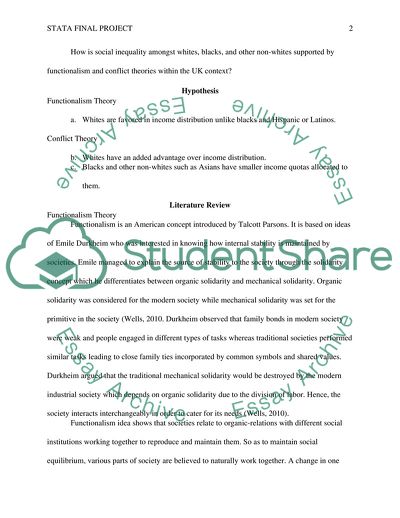Cite this document
(How Is Social Inequality amongst Whites, Blacks, and Other Non-Whites Statistics Project Example | Topics and Well Written Essays - 3000 words, n.d.)
How Is Social Inequality amongst Whites, Blacks, and Other Non-Whites Statistics Project Example | Topics and Well Written Essays - 3000 words. https://studentshare.org/statistics/1879722-stata-final-project
How Is Social Inequality amongst Whites, Blacks, and Other Non-Whites Statistics Project Example | Topics and Well Written Essays - 3000 words. https://studentshare.org/statistics/1879722-stata-final-project
(How Is Social Inequality Amongst Whites, Blacks, and Other Non-Whites Statistics Project Example | Topics and Well Written Essays - 3000 Words)
How Is Social Inequality Amongst Whites, Blacks, and Other Non-Whites Statistics Project Example | Topics and Well Written Essays - 3000 Words. https://studentshare.org/statistics/1879722-stata-final-project.
How Is Social Inequality Amongst Whites, Blacks, and Other Non-Whites Statistics Project Example | Topics and Well Written Essays - 3000 Words. https://studentshare.org/statistics/1879722-stata-final-project.
“How Is Social Inequality Amongst Whites, Blacks, and Other Non-Whites Statistics Project Example | Topics and Well Written Essays - 3000 Words”. https://studentshare.org/statistics/1879722-stata-final-project.


